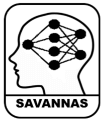| Title |
Statistical Analysis techniques Versus Artificial Neural Networks for
diagnosis and outcome prediction after Acute Stroke
|
| Acronym |
SAVANNAS
|
| Chief investigator |
Professor Philip M Bath
|
| Synopsis |
Stroke is common, may be mimicked by other conditions, and often has a
poor outcome. We will assess the accuracy of state-of-the-art
machine learning with artificial neural network (ANN) models, including
deep neural networks (DNN), in the diagnosis of stroke versus mimics, and
prediction of early complications (deterioration, stroke recurrence and
re-bleeding) and late outcomes (functional outcome, cognition, mood,
quality of life, disposition, death) after stroke. These will be
compared with conventional statistical regression models (binary, Cox,
ordinal and linear regression). Neither ANN/DNN nor statistical
approaches are used routinely in stroke management in part because of
poor accuracy and acceptability to clinicians. If diagnostic and
prediction models are accurate and acceptable to patients and clinicians
then their use could be rapidly introduced into clinical care to improve
patient management, for example through the use of apps on
phones/tablets/computers. We plan to use individual patient data
from acute stroke trials (which will include those with stroke, TIA and
mimics) with baseline clinical and imaging, on treatment, diagnostic and
outcome information.
|
| Number of patient records |
Approx. 90,000
|
| Duration |
2.5 years
|
| Hypotheses |
- Mathematical approaches (ANN including DNN, statistical) enhance
diagnosis and prediction of stroke and its outcomes
- ANN/DNN
approaches have superior accuracy to statistical regression approaches
for diagnosis and prediction in stroke
- Addition of early
follow-up information improves outcome prediction
|
| Research questions |
- Do ANN (including DNN) and/or statistical regression enhance
diagnosis of stroke and prediction of outcomes?
- Do ANN/DNN have
superior accuracy to regression in predicting outcomes (binary, ordinal,
continuous) up to days2-10 (death, deterioration, impairment, recurrence,
bleeding following thrombolysis, haematoma expansion) and days 90 (death,
recurrence, dependency, disability, cognition, mood, quality of life,
disposition) after stroke?
- Does the addition of early follow-up
data, at days 2-10, improve prediction for both ANN and
regression?
- Does ANN have superior accuracy to regression in
diagnosis of stroke?
- Does the use of much larger (10-50-fold
larger) and more diverse (international/multicentre) datasets improve
test statistics, as compared with earlier published smaller
datasets?
|
| Analysis methods |
ANN/DNN ANN models will be implemented in R,
including the use of cross-validation (to limit over-fitting). We
will test different forms of ANN including feedforward networks, radial
basis networks and the latest deep neural network types; and assess
whether the additional use of a genetic algorithm optimises ANN
models. Model performance comparison such as comparisons between
models, and receiver operating characteristic(area under curve) will also
be performed in R. Checks will be performed using SAS.Statistical regression models Regression models
used will include binary logistic regression, Cox proportional hazards
regression, ordinal logistic regression and multiple linear
regression. All analyses will be run in R, with checks performed
using SAS.Model development and testing The
process will be:- Develop/train the model in a first dataset (using
a random selection of approx. 1/3 of the data)
- Validate the model
in the remaining 2/3 of the first dataset
- Test the model in a
separate dataset
|

